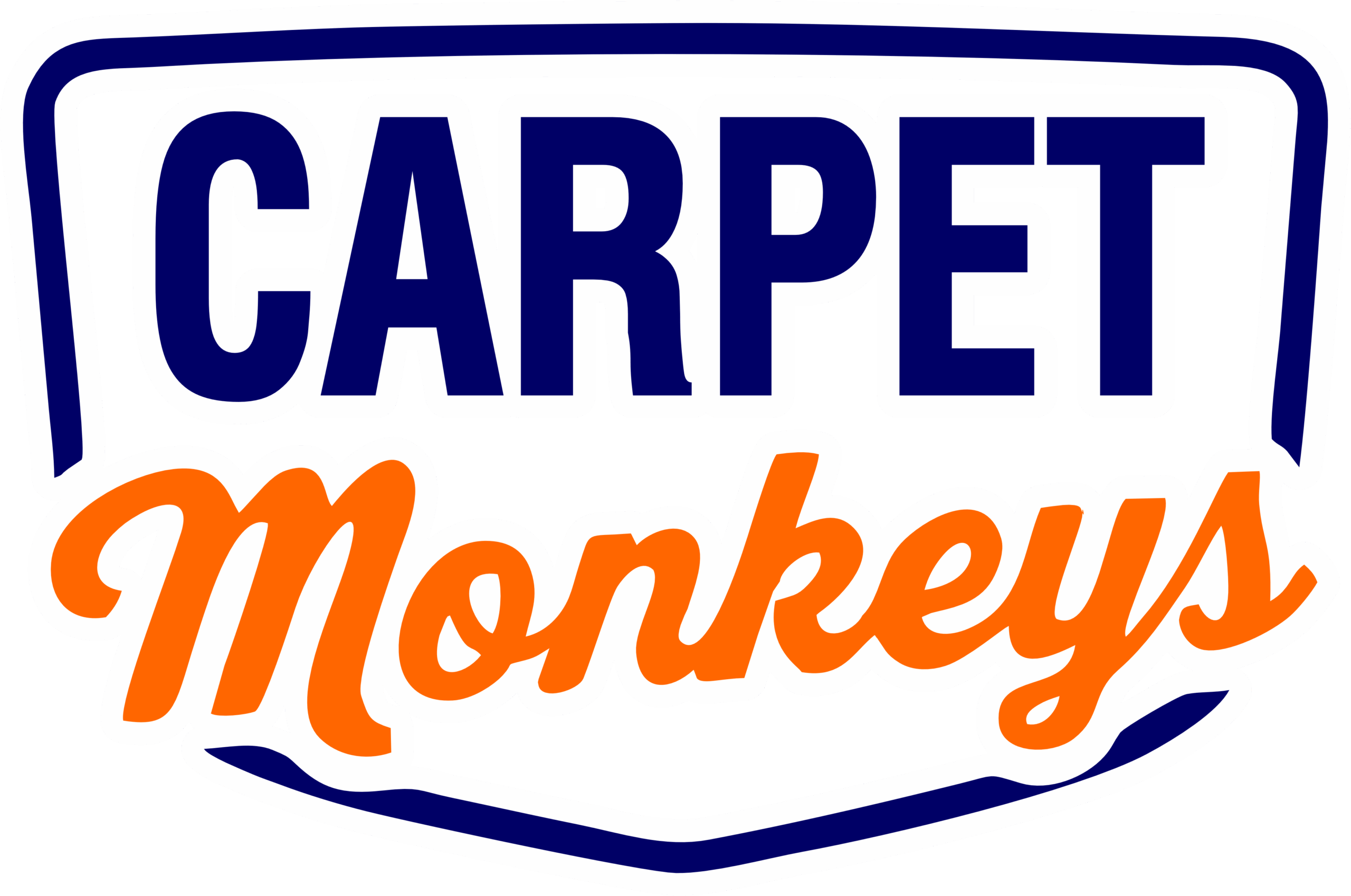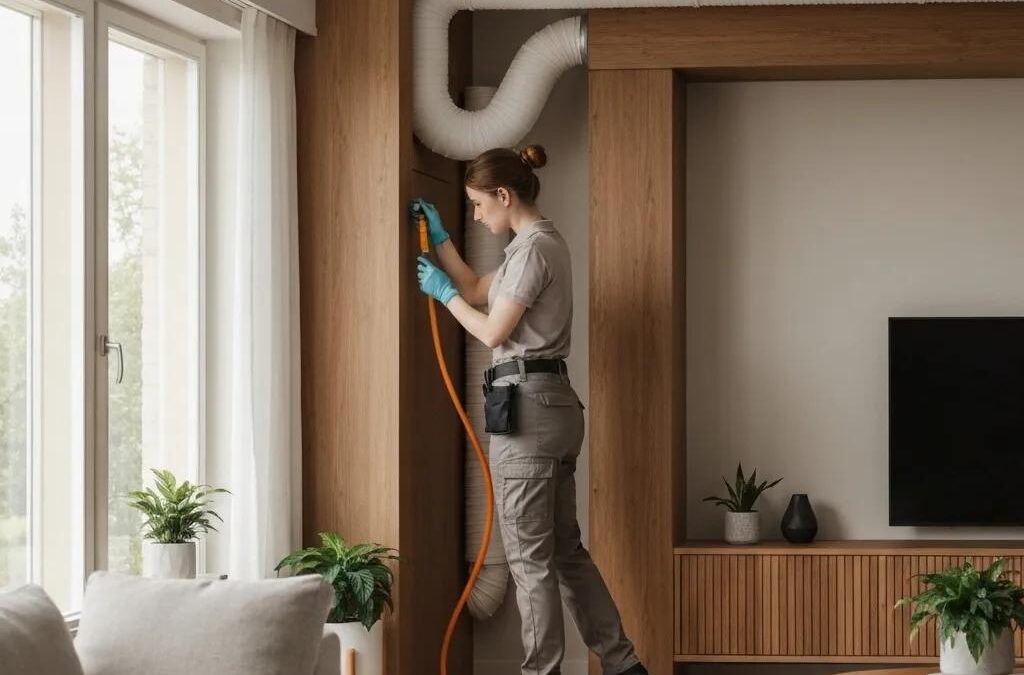Air duct cleaning is a vital home maintenance procedure that removes built-up dust, allergens, and microbial contaminants from the supply and return ducts, which function as the lungs of a home’s conditioned air circulation system. By moving air throughout the home, these ducts inevitably accumulate layers of material that impact both indoor air quality (IAQ) and the efficiency and longevity of the entire heating, ventilation, and air conditioning (HVAC) system. This comprehensive guide is designed to assist homeowners in making an informed decision: should you attempt a do-it-yourself (DIY) approach, or is hiring a professional air duct cleaning service the more practical and effective choice?
Many homeowners search for a “local air duct cleaning service” because they need clear guidance on expectations regarding benefits, the process, transparent pricing, and recommended frequency. Below, we delve into the core advantages of professional cleaning, provide a step-by-step breakdown of how professionals perform and verify their work using industry-standard equipment, analyze the key cost drivers, and offer a balanced DIY vs. professional checklist. We will also clarify why essential dryer vent cleaning should complement duct cleaning for complete home safety and efficiency.
What Are the Key Benefits of Professional Air Duct Cleaning?
Professional air duct cleaning utilizes specialized mechanical agitation tools and high-efficiency particulate air (HEPA) vacuum systems to tackle contaminants that standard household maintenance and filtration systems simply cannot reach. This two-pronged mechanism—dislodging and immediate, contained removal—is critical to maximizing results across three major areas: health, efficiency, and equipment longevity.
How Does Air Duct Cleaning Improve Indoor Air Quality?
Air duct cleaning directly improves IAQ by physically extracting settled contaminants from the internal pathways. Dust, pet dander, pollen, fibers, and mold spores that have settled and adhered to the duct walls are prevented from being recirculated into the living space. Professionals use powerful, contained vacuum systems to ensure that once the material is dislodged, it is captured immediately rather than being pushed further into the system or becoming airborne within the home. In environments characterized by high external dust infiltration, such as the Las Vegas area, removing this trapped material helps reduce the steady-state particulate load indoors. A thorough cleaning, when followed by diligent filter maintenance, results in noticeably improved perceived air freshness and reduced visible dust accumulation on registers and surfaces.
Can Clean Air Ducts Reduce Allergies and Asthma Symptoms?
The ductwork acts as a reservoir for common household allergens, including dust mite fragments, pet dander, and external pollen. During HVAC operation, these particles are distributed throughout the home, triggering respiratory and nasal irritation in sensitive occupants. By effectively removing these allergen reservoirs, professional cleaning measurably lowers exposure levels. While duct cleaning is a significant step, it must be viewed as one component of a holistic allergy management strategy. High-quality air filtration (HEPA filters), regular filter changes, humidity control, source control (regular pet grooming, entry mats), and medical management remain essential. Customers should recognize duct cleaning as a quantifiable reduction in a major exposure pathway, not a complete solution for chronic respiratory conditions.
How Does Air Duct Cleaning Enhance HVAC System Efficiency?
Cleaning the ductwork improves aerodynamic efficiency by removing the resistive layer of built-up dust and debris on the internal surfaces. This reduction in internal friction allows the blower fan to move the required volume of conditioned air with less effort (lower static pressure). Improved airflow enhances the performance of the heat-exchange coil and can lead to shorter run-times for the HVAC unit. While results vary based on the initial level of contamination, homeowners with significantly dirty systems may observe single-digit percentage improvements in system efficiency, resulting in modest energy savings. Furthermore, reduced airflow resistance minimizes strain on critical components like the blower motor and fan, potentially extending the equipment’s lifespan and reducing unexpected repair frequency.
What Role Does Air Duct Cleaning Play in Mold and Bacteria Prevention?
The organic components within common household dust (skin flakes, pollen, dander) provide a nutrient source for microbial growth, particularly when moisture is present. Professional cleaning reduces these nutrient reservoirs, thereby lowering the likelihood of ducts supporting spore or bacterial growth. Crucially, cleaning alone cannot resolve active mold or moisture problems. If a professional inspection reveals visible mold growth on porous materials or wet conditions, a specialized remediation pathway is required, including moisture source correction, before any cleaning can take place. Reputable professionals will inspect for these conditions and recommend remediation when necessary, ensuring household health and protecting equipment from irreversible damage.
How Does the Professional Air Duct Cleaning Process Work?
A professional air duct cleaning service follows a methodical, multi-step procedure to ensure thorough and contained removal of contaminants.
Equipment and Techniques Used by Professionals
Professional teams employ highly specialized, purpose-built equipment:
- HEPA-Rated Negative Pressure Vacuum Systems: These powerful vacuums are attached to a central point in the duct system (usually near the air handler) and run continuously to create negative pressure. This setup contains all dislodged debris and prevents particulates from escaping into the occupied space. The HEPA filtration ensures the air exhausted from the vacuum is clean.
- Mechanical Agitation Devices: Technicians use specialized tools like rotary brushes for metal ducts or air whips (using compressed air) for flexible ducts. These tools are navigated through the duct runs to break up and dislodge compacted dust, lint, and debris, moving it toward the centralized negative pressure vacuum point for capture.
- Containment: The use of containment protocols—sealing registers and using access points designed for equipment—is essential to prevent cross-contamination.
Air Duct Inspection and Assessment
The cleaning process always starts with a comprehensive inspection. Technicians visually survey accessible plenums, registers, and the HVAC cabinet, often using miniature inspection cameras to view internal conditions deep within the duct runs. They look for:
- Excessive settled dust or debris.
- Visible mold or excessive moisture.
- Evidence of pest infestation (droppings, nests).
- Structural issues (disconnected ducts, damaged insulation).
This initial assessment determines the scope of work and clarifies whether a standard cleaning is appropriate or if remediation is required. Visible biological contamination or structural issues typically trigger a professional remediation referral.
What Are NADCA Standards and Why Do They Matter?
The National Air Duct Cleaners Association (NADCA) sets the industry standard for HVAC system cleaning. Adherence to NADCA standards is a key quality benchmark, ensuring that cleaning companies:
- Document system condition before and after cleaning.
- Use source removal methods (agitation coupled with vacuum capture).
- Employ appropriate containment and HEPA-rated equipment.
- Verify results to ensure the system meets a specified level of cleanliness (often $<0.1$ grams of settled dust per square meter).
Understanding NADCA basics empowers homeowners to select a qualified provider and verify that the scope and outcomes align with best practices.
How Is Post-Cleaning Verification Performed?
Verification confirms the value of the service. Customers should expect to receive:
- Before-and-After Photos/Video: Visual evidence of the cleaned duct interiors.
- Written Inspection Report: Summary of work performed, including any issues found and recommendations.
- Airflow Check: Demonstrating improved airflow at the registers.
Homeowners can practically verify results by noting reduced dust accumulation at registers, the elimination of persistent musty odors, and observable improvements in temperature consistency.
What Are the Costs of Air Duct Cleaning Services Near Me?
Understanding duct cleaning costs requires recognizing the primary price drivers, which ensure the estimate accurately reflects the necessary labor and equipment for your specific system.
Factors Influencing Air Duct Cleaning Prices in Las Vegas
In a market like Las Vegas, local factors significantly influence pricing:
- System Size and Configuration: Homes with more registers, longer duct runs, or complex system configurations (e.g., multi-story homes) require substantially more labor hours.
- Environmental Dust Loads: Dusty climates often mean heavier buildup, necessitating more intensive agitation techniques and longer cleaning times than in cleaner regions.
- Accessibility: If the system requires difficult access (e.g., tight attic spaces, rooftop units), technician time and specialized equipment needs increase the cost.
Transparent pricing is highly beneficial, as it allows customers to compare quotes accurately. A reputable quote should clearly define the scope, list the number of vents, and specify inclusions (e.g., coil cleaning) or exclusions (e.g., remediation).
Average Cost Range and Guarantees
While actual costs are highly variable, market-observed ranges for 2025 generally place comprehensive whole-house air duct cleaning in a moderate to high range, depending entirely on the factors above. Dryer vent cleaning, as a single, focused service, typically falls into an affordable safety-service bracket.
Customers should look for:
- Satisfaction Guarantees: A promise of rework or refund if the documented cleanliness standards are not met.
- Bundling Discounts: Discounts for combining duct cleaning with related services like dryer vent cleaning, carpet cleaning, or tile cleaning.
Should You Attempt DIY Air Duct Cleaning or Hire Professionals?
The decision between DIY and professional service hinges on the required depth of cleaning, the risks involved, and the necessary verification.
Risks and Limitations of DIY Air Duct Cleaning
Attempting internal duct cleaning with standard household tools is generally ineffective and can be risky:
- Inadequate Capture: Household vacuums lack the power and HEPA filtration to capture fine particulates. DIY cleaning often displaces dust deeper into the system or releases it into the living space, worsening IAQ temporarily.
- Risk of Damage: Improper access or forceful manual attempts can easily tear flexible ductwork, dislodge insulation, or damage internal HVAC components.
- Health Hazards: Disturbing heavy buildup or biological contamination (mold, rodent droppings) without proper containment can increase short-term exposure, posing a risk to occupants.
Homeowners should limit DIY to superficial tasks: cleaning vent registers, vacuuming around return grilles, and replacing air filters according to the manufacturer’s schedule.
Advantages of Certified Professionals
Professionals offer a distinct advantage:
- Specialized Equipment: HEPA containment, negative pressure, and targeted agitation tools ensure maximum debris removal without cross-contamination.
- Training and Certification: Technicians are trained in NADCA-aligned protocols, ensuring safety, effectiveness, and proper system component handling.
- Inspection Capabilities: Professionals can identify underlying issues (mold, leaks, structural damage) that necessitate a full repair or remediation, saving the homeowner from future, more expensive problems.
Why Is Dryer Vent Cleaning an Essential Complement to Air Duct Cleaning?
Dryer vent cleaning is a non-negotiable safety and efficiency measure that, while separate from the HVAC system, is often bundled with duct cleaning.
How Does Dryer Vent Cleaning Prevent Fire Hazards?
Lint, a highly combustible material, accumulates within the dryer exhaust path. When this accumulation restricts airflow, the dryer overheats, creating the three components necessary for a fire: fuel (lint), heat (overheating), and air (though restricted). Removing the lint interrupts this process by restoring proper thermal dissipation. Dryer fires are a leading cause of residential structure fires, making annual vent cleaning a crucial risk-reduction task.
The Professional Dryer Vent Cleaning Process
The process involves inspecting the entire path—from the dryer connection to the exterior termination—and using specialized flexible brushes and powerful vacuum systems to clear all lint and debris. Technicians confirm restoration of airflow, which homeowners immediately notice through faster drying times and lower energy use.
Recommended Cleaning Frequency
- Dryer Vents:Annual professional cleaning is recommended for most households. Heavy-use scenarios (large families, frequent laundry) or systems with long, complicated runs may require cleaning every six months.
- Air Ducts: As per NADCA, a general cadence of 3–5 years is a good baseline, adjusted for specific conditions like pets, allergies, or post-renovation dust.
When Should You Schedule Air Duct and Dryer Vent Cleaning?
Determining the ideal frequency balances maintenance cost with risk and performance.
NADCA’s Recommendations and When to Clean More Frequently
NADCA’s 3–5 year baseline assumes routine filter changes and normal occupancy. You should clean more frequently if any of these factors apply:
- Post-Renovation: After major construction or remodeling that generated significant dust.
- New Occupancy: When moving into a new home, especially if the history of cleaning is unknown.
- Pets and Allergies: Presence of shedding pets or occupants with moderate to severe respiratory sensitivities.
- Visible Contamination: Visible mold, dust, or pest evidence in the system.
Signs That Indicate Your Air Ducts Need Cleaning
Homeowners should look for practical indicators:
- Visible Dust: Rapid accumulation of dust on registers or noticeable debris on return grilles.
- Persistent Odors: Musty, moldy, or chemical odors that run when the HVAC system is operating.
- Reduced Performance: Decreased airflow from vents or the system running longer than usual to achieve the desired temperature.
- Pest Evidence: Signs of mice, insects, or nesting materials near the air handler or vents.
Regular monitoring of these signs, combined with adherence to NADCA guidelines, ensures cleaning is scheduled when it delivers the maximum measurable value for IAQ and efficiency. Learn more about air duct cleaning service with The Carpet Monkeys, the best cleaning company in Las Vegas, NV.





